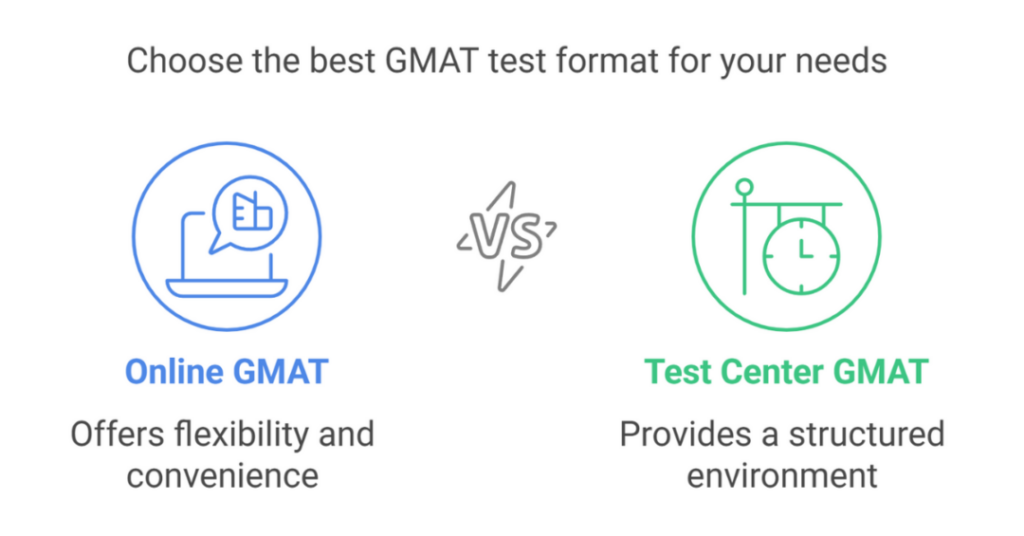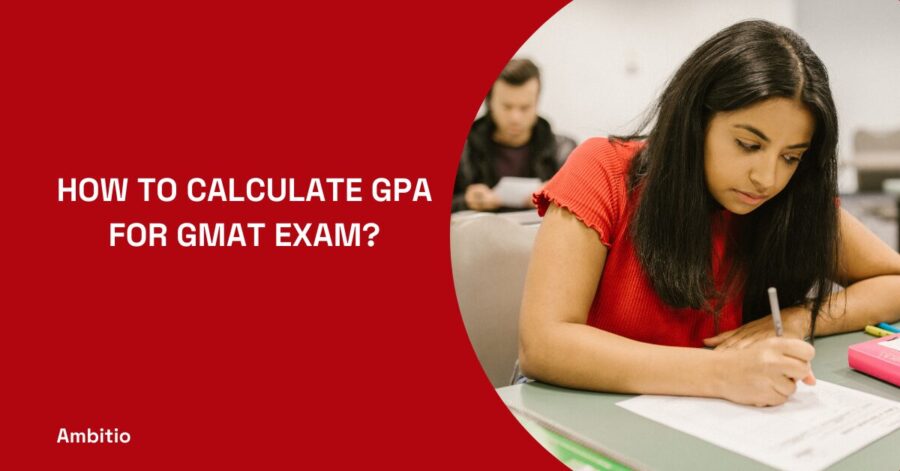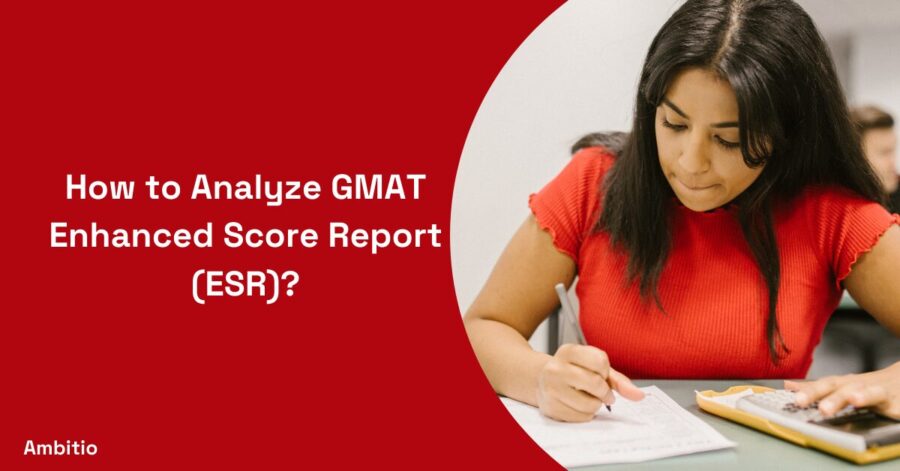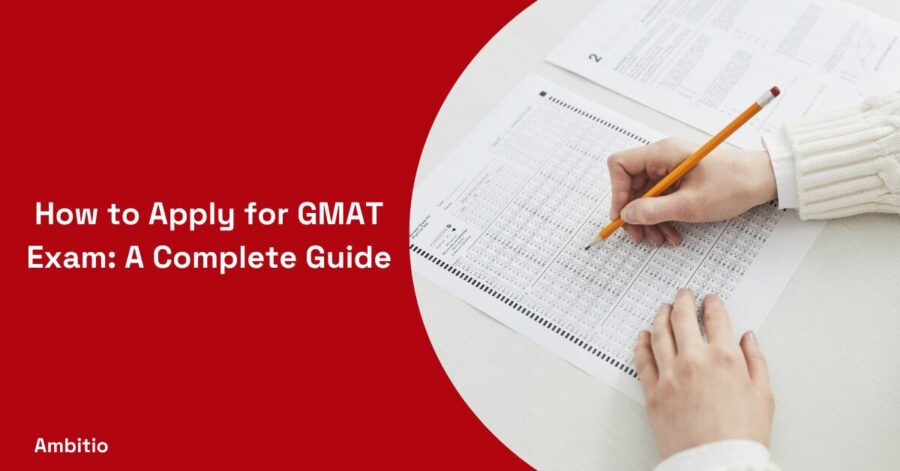22 May 2025
7 minutes read
10 Best Sample Data Sufficiency GMAT Questions for Indian Students

Key Takeaways
- Data sufficiency GMAT questions assess logical reasoning more than calculations, making them a high-yield section for Indian test takers.
- Data sufficiency GMAT problems always include two statements; success lies in evaluating them separately and together.
- Data sufficiency GMAT prep requires mastering question types, understanding answer choices, and practicing with official sample questions.
Most Indian test takers agree on one thing: GMAT data sufficiency questions are the trickiest part of the GMAT quant section.
Every data sufficiency question consists of a question and two statements, and the objective is to determine whether the information given is sufficient to answer the question asked. But the real challenge lies in the logic, not the math.
This section is not about solving but about evaluating statements. For Indian students, who often come from math-heavy academic backgrounds, the twist of logic over calculation presents a unique challenge.
Preparing through sample GMAT data sufficiency questions sharpens not only your quantitative reasoning but also your time management skills.
Since the GMAT exam allocates only 62 minutes to complete the quantitative section, knowing how to evaluate statement-1, statement-2, and their combination quickly is key.
This article explores sample data sufficiency questions, gives strategies to answer the question effectively, and helps Indian students succeed.
What is GMAT?
Fun fact: Over 200,000 people take the GMAT test each year, and a significant number come from India.

The GMAT, or Graduate Management Admission Test, is a standardized test required for admission into many business schools worldwide.
- GMAT consists of four sections: Analytical Writing Assessment, Integrated Reasoning, Quantitative, and Verbal.
- The GMAT quant topic includes both problem solving questions and data sufficiency questions.
- The section lasts 62 minutes and tests your ability to analyze data and draw conclusions.
- GMAT score is accepted by top global B-schools including Harvard, INSEAD, London Business School, and IIMs (for select programs).
- You can take the GMAT online or at official test centers across India.
Why is GMAT Important for Indian Students Who Want to Study Abroad?
Fun fact: GMAT scores are valid for five years, making it a great long-term investment for Indian aspirants.
The GMAT is often the first step for Indian students looking to pursue an MBA abroad.
- A strong GMAT score increases your chances of getting into top programs like University of Pennsylvania Wharton, Northwestern University Kellogg, or Rotman.
- It serves as a benchmark for scholarships at universities to study in USA, UK, and Canada.
- High scores demonstrate your readiness for the rigors of international MBA programs.
- The quant section, especially data sufficiency, showcases your problem-solving and analytical strengths.
- GMAT scores are often required alongside other exams like IELTS, TOEFL, and GRE.
What are GMAT Data Sufficiency Questions?
Fun fact: Data-sufficiency questions often have the same five answer choices, every single time.

Data sufficiency questions are a unique part of the GMAT quant section. Each question consists of a question stem followed by two statements. The objective is to determine whether the information provided is sufficient to answer the question asked.
- Each data-sufficiency question tests your ability to reason quantitatively, not just compute.
- You do not solve the problem but instead determine if the given data can provide a definitive answer.
- The five answer choices remain consistent: (A) Statement-1 alone is sufficient, (B) Statement 2 alone is sufficient, (C) Both statements together are sufficient, (D) Each alone is sufficient, (E) Neither statement alone is sufficient.
- For example, if you’re asked “What is the value of x?”, your goal is to determine whether either or both statements provide enough data to find a unique answer.
- Institutions like NYU Stern, University of Toronto, Oxford Saïd, and UCLA Anderson analyze this section deeply.
Sample Format Table:
| Question Stem | Statement 1 | Statement 2 | Correct Answer | Explanation |
|---|---|---|---|---|
| What is the value of x? | x + y = 10 | y = 4 | C | Statements together are very sufficient to answer |
This format applies whether you are applying to MIT Sloan or University of Manchester, as the GMAT is standardized. You must determine if there is sufficient information to answer using the statements provided, alone or in combination.
How to Approach GMAT Data Sufficiency Problems?
Fun fact: GMAT DS questions are designed to test your logic more than your calculation ability.
Cracking a data-sufficiency question is more about mindset than math. These strategies can boost your performance:
- Understand the five standard answers to the question and memorize them.
- Read the question stem carefully before evaluating any statement.
- Determine whether the question is asking for a value question or a yes and a no answer.
- Label the statements clearly: Statement-1 and Statement-2.
- Evaluate statement 1 first without looking at statement 2.
- Only then evaluate statement 2 alone.
- If neither statement alone is sufficient, evaluate statements together.
- Look out for traps involving number properties and negative numbers.
- Avoid unnecessary calculations—focus on logic.
- Use official GMAT practice questions to simulate real test conditions.
10 Best Data Sufficiency GMAT Sample Questions for Indian Students
Fun fact: Many GMAT data sufficiency problems reuse the same underlying concepts with new numbers.

Below are 10 GMAT DS questions tailored to help you build intuition and accuracy. Each includes a question, the right answer, and a brief explanation.
Sample Question 1
Is x > 5?
(1) x^2 > 25
(2) x is a positive integer
Right Answer: C
- Statement (1) alone gives x > 5 or x < -5 — not sufficient.
- Statement (2) tells us x is positive but not how large.
- Together: x must be > 5.
Explanation: Only when both statements are used together are very sufficient to answer the question.
Sample Question 2
What is the value of x?
(1) 3x + 2 = 11
(2) x^2 = 9
Right Answer: A
- Statement (1): x = 3 — sufficient.
- Statement (2): x = 3 or -3 — not sufficient.
- Don’t need both statements.
Explanation: Statement-1 alone is sufficient to find a unique answer.
Sample Question 3
Is y an integer?
(1) y^2 = 25
(2) y = 5.0
Right Answer: B
- Statement (1): y = ±5 — integers, but not definitive.
- Statement (2): y = 5.0 is an integer.
- So only (2) alone is sufficient.
Explanation: Statement 2 confirms definitively that y is an integer.
Sample Question 4
Is x^2 equal to 16?
(1) x = 4
(2) x is an integer
Right Answer: A
- Statement (1): x = 4, so x^2 = 16 — sufficient.
- Statement (2): doesn’t provide a value for x.
Explanation: Only statement-1 directly answers the question.
Sample Question 5
What is the perimeter of rectangle R?
(1) The length is 6 units.
(2) The width is 4 units.
Right Answer: E
- Statement (1): only length known.
- Statement (2): only width known.
- Together: still no information about both.
Explanation: Neither statement alone nor together are sufficient to answer the question.
Sample Question 6
Is x a prime number?
(1) x > 1
(2) x has only two distinct positive factors
Right Answer: B
- Statement (1): doesn’t rule out non-primes >1.
- Statement (2): definition of a prime — sufficient.
Explanation: Statement 2 gives definitive answer; statement-1 does not.
Sample Question 7
Is x > y?
(1) x + y > 0
(2) x – y > 0
Right Answer: B
- Statement (1): ambiguous.
- Statement (2): confirms x > y.
Explanation: Only statement 2 is sufficient.
Sample Question 8
What is the value of x + y?
(1) x = 3
(2) y = 5
Right Answer: C
- Statement (1): x = 3, no y.
- Statement (2): y = 5, no x.
- Together: x + y = 8
Explanation: Each alone is not sufficient; together are sufficient to answer the question.
Sample Question 9
Is x divisible by 3?
(1) x = 12
(2) x is divisible by 6
Right Answer: C
- Statement (1): 12 is divisible by 3 — sufficient.
- Statement (2): divisible by 6 => divisible by 3 — sufficient.
Explanation: Each statement alone is sufficient; so either statement is sufficient.
Sample Question 10
What is the value of x if x is an integer?
(1) x^2 – 4x + 4 = 0
(2) x is a positive number
Right Answer: A
- Statement (1): factor to (x-2)^2 = 0 → x = 2
- Statement (2): only says x is positive
Explanation: Statement-1 alone is sufficient.
5 Additional GMAT Practice Questions
Fun fact: Practicing DS questions daily improves your score more than passive reading.
Here are five more GMAT data sufficiency practice questions designed to strengthen your ability to evaluate statement-1, statement-2, and determine when they are sufficient to answer the question.
Practice Question 1
Is x an even number?
(1) x is divisible by 4
(2) x^2 is an even number
- Statement (1): If divisible by 4, then x is even — sufficient.
- Statement (2): x^2 even → x is even or odd — not definitive.
- So, statement-1 alone is sufficient.
Practice Question 2
What is the value of y?
(1) y + 5 = 12
(2) y^2 = 49
- Statement (1): y = 7 — unique value — sufficient.
- Statement (2): y = ±7 — two possible values — not sufficient.
- Therefore, statement-1 alone is sufficient.
Practice Question 3
Is z a negative number?
(1) z^2 = 16
(2) z < 0
- Statement (1): z = ±4 — not sufficient.
- Statement (2): z < 0 — yes, z is negative — sufficient.
Practice Question 4
Is the product of x and y positive?
(1) x > 0
(2) y > 0
- Statement (1): y unknown — not sufficient.
- Statement (2): x unknown — not sufficient.
- Together: x > 0 and y > 0 → product is positive — sufficient.
Practice Question 5
What is the remainder when x is divided by 3?
(1) x = 10
(2) x = 13
- Statement (1): 10 ÷ 3 → remainder 1 — sufficient.
- Statement (2): 13 ÷ 3 → remainder 1 — sufficient.
- Each alone is sufficient, but same result — either is fine.
Should We Completely Rely on Sample GMAT Data Sufficiency Questions?
Fun fact: No two GMAT data-sufficiency questions are ever exactly alike.

Sample questions help build skill, but they are just one part of your preparation:
- Sample GMAT data sufficiency helps you understand structure.
- They improve timing and answer choice recognition.
- They expose common traps set by test writers.
- They help reinforce concepts like number properties and equations.
- Real test performance depends on mastering concepts, not memorizing patterns.
Importance Table:
| Preparation Element | Importance | Reason |
| Sample Questions | High | Build familiarity and speed |
| Conceptual Mastery | Essential | Required to answer the question accurately |
| Official Practice | Very High | Closely mirrors actual test level |
| Strategy Practice | Medium | Helps avoid traps and save time |
| Review Mistakes | Critical | Prevents repeat errors |
Conclusion
The GMAT data sufficiency section can initially appear complex, but with the right approach, Indian students can master it. From understanding what the question asks to evaluating each statement logically, every data-sufficiency question can become a strength.
The tips, sample GMAT data-sufficiency questions, and additional practice questions provided above are crafted to build your confidence and sharpen your logic. Remember, every question consists of a stem and two statements—your job is to determine if you have sufficient information to answer.
Practice consistently, review your mistakes, and keep your mind sharp with official GMAT practice material. Whether you’re targeting Yale SOM or the University of British Columbia, mastering data sufficiency can set your application apart.
So, take the GMAT with confidence with Ambitio, armed with logic, strategy, and a deep understanding of this challenging question type.
FAQs
What is the data sufficiency GMAT section?
The data sufficiency GMAT section presents a unique challenge where test takers must assess whether provided data is enough to answer a question—not solve it outright. Every data sufficiency GMAT question emphasizes logical reasoning and sufficiency over calculations.
Why is data sufficiency GMAT considered tricky?
Data sufficiency GMAT questions often mislead test takers who default to solving rather than evaluating. These questions test your ability to determine if the data is adequate, making the data sufficiency GMAT section more about analysis than arithmetic.
How can Indian students master the data sufficiency GMAT?
Indian students can master the data sufficiency GMAT by focusing on statement evaluation strategies rather than calculation shortcuts. The key to cracking the data sufficiency GMAT lies in recognizing logic patterns and knowing when information is sufficient.
What are common mistakes in data sufficiency GMAT questions?
One common mistake in data sufficiency GMAT is assuming you need to solve the problem, which wastes time and causes errors. Success in data sufficiency GMAT depends on isolating statements, avoiding assumptions, and determining sufficiency logically.
Do I have to solve math in data sufficiency GMAT?
No, solving math is not the goal in data sufficiency GMAT; you’re expected to judge if the given statements offer enough information. In every data sufficiency GMAT question, the emphasis is on sufficiency, not arithmetic results.
Are data sufficiency GMAT questions part of the quant section?
Yes, all data sufficiency GMAT questions are embedded within the quant section of the exam. The data sufficiency GMAT portion tests your quantitative reasoning and directly affects your GMAT quant score.
What’s the best way to prepare for data sufficiency GMAT?
To prepare effectively for data sufficiency GMAT, practice recognizing question types and evaluating individual statements before combining them. Repeated exposure to data sufficiency GMAT problems improves your ability to identify when data is sufficient.

You can study at top universities worldwide!
Get expert tips and tricks to get into top universities with a free expert session.
Book Your Free 30-Minute Session Now! Book a call now




























